CHEM 750/7500-04 - Aqueous Solutions
Semester: Winter 2024
Professor: P. Tremaine | Discipline: Physical | Campus: GuelphDescription
An introduction to aqueous solution chemistry, from classical macroscopic descriptions to modern treatments of the properties of electrolytes and non-electrolytes at a molecular level.
Synopsis: The purpose of the course is to provide an introduction to aqueous solution chemistry, from classical macroscopic descriptions to modern treatments of electrolytes and non-electrolytes at a molecular level. The properties of aqueous solutions have been the subject of study for over a century and continue as an area of intense research. Near 25 °C, water is a “special” solvent whose solvation properties result from a complex interplay of hydrogen bonding effects. A consideration of the underlying physical chemistry of solutions and interfaces over a range of conditions puts these effects in context and provides tools for practical applications, some of which will be presented in the course.
The course is aimed at physical chemistry graduate students whose thesis research projects lie in areas related to aqueous solutions and interfaces, and to graduate students in the applied sciences who seek to understand the fundamental underlying principles of aqueous geochemistry and chemical engineering processes. An undergraduate background in physical and analytical chemistry is expected. An undergraduate course in statistical thermodynamics is desirable but not essential. Students with an undergraduate degree in geology, engineering, or environmental science should consult with the instructor before enrolling.
Learning Objectives: Students completing the course will be expected to have acquired:
- An understanding of the underlying physical chemistry of solutions at a level required to carry out graduate research in related areas of science
- An understanding of experimental methods used in modern aqueous solution chemistry, at a level required to read current science and engineering research papers in the field.
- An ability to apply this understanding to solve problems in related areas of applied science
- The Thermodynamics of Water, Ice and Aqueous Solutions
- Review of physical transformations of pure substances
- Properties of liquid water and the ices
- Review of Raoult’s law, Henry’s law, colligative properties
- Review of chemical equilibrium constants vs T and p
- Thermodynamics of Liquid Solutions(II)
- Experimental methods to measure equilibrium constants
- Review of partial molar properties
- Experimental methods to measure partial molar properties
- Equilibrium Electrochemistry
- Equilibrium electrochemistry
- Speciation diagrams & Eh pH diagrams
- “Structure” of Liquids(I)
- Introduction to statistical thermodynamics
- Intermolecular forces
- “Structure” of Liquids (II)
- Distribution and correlation functions
- Permittivity and dielectric relaxation in polar solvents
- Electrolyte Solutions (I): Solvation
- Ionic solvation
- Born equation
- Helgeson-Kirkham-Flowers model
- Electrolyte Solutions (II): Activity Coefficients
- Thermodynamics of electrolyte solutions
- Debye-Huckel Theory
- Pitzer ion interaction model
- MID TERM EXAM
- Electrolyte Solutions (III): Ion Association
- Thermodynamics
- Bjerrum model
- Conductance and Transport Properties
- Non-equilibrium thermodynamics and isothermal diffusion
- Conductivity of electrolyte solutions
- Debye-Onsager Model
- Spectroscopic Studies of Liquid Structure, Solvation and Speciation(I)
- UV-visible spectroscopy
- Infrared spectroscopy
- Spectroscopic Studies of Liquid Structure, Solvation and Speciation(II)
- Raman spectroscopy
- Liquids and Solutions at Interfaces (If time permits)
- Interfacial tension and thermodynamics of interfaces
- Liquid-gas interface & adsorption isotherms
- Surface films on liquids
- Micelles
Undergraduate Project Presentations (Last Week of Class; Attendance by Chem 7500 Graduate Students is required).
FINAL EXAM: Date TBD in the period April 13 to 23, 2024.
Materials
Students are expected to own or have access to the textbooks. One copy is on reserve at each of the UW and U of G libraries:
- Atkins, J. De Paula and Keeler Physical Chemistry, 12th ed Vol 1, Thermodynamics and Kinetics and Vol 2, Quantum Chemistry, Spectroscopy and Statistical Thermodynamics
OR
- W. Atkins and J. de Paula, Physical Chemistry, 10th or 11th ed. (Freeman, 2014 & Oxford, 2018)
Further Reading: More detail and a source of material for some lectures and readings can be found in the following monographs:
- R. Fawcett, Liquids, Solutions and Interfaces (Oxford University Press, 2004).
- C. Harris, Quantitative Chemical Analysis 9th ed (Freeman, NY, 2010) or D.C. Harris & C. Lucy, Quantitative Chemical Analysis 10th ed (Macmillan, NY, 2020)
- C. Hiemenz and R. Rajagopalan, Principles of Colloid and Surface Chemistry (3rd ed.) (Marcel Dekker, N.Y., 1997). Chapter 8.
Evaluation
Assignments (15%): Due in class: 8; Mar 7; Mar 28. (Dates TBC)
- Short and long answer questions requiring hand calculator or explanations demonstrating scientific understanding.
Mid-Term Exam (25%): Week of March 4, (Date, time, TBC)
- Contingency: 72 hr Take-home exam,
- Exam Format: Short and long answer questions requiring hand calculator or explanations demonstrating scientific Contingency take-home may have essay-type science questions.
Term Project (35%): Critical literature review of approved topics related to the
- Term Paper (April 8): Approximately 30 pages plus reference list in journal
- Class Presentation (April 2 and 4, in class, April 5, 5:30-7:00 pm, TBC): Oral talk with Power- point slides: 20 min + 5 min questions
Final Exam (25%): April 13 to 23, (Date, time, TBC)
- Contingency: 72 hr Take-home exam
- Exam Format: Short and long answer questions requiring hand calculator; one or more text essay-type questions.
IMPORTANT: Assignments must be done individually.
Lab/Project
IMPORTANT: Use of laptops in class requires written permission. Personal communication devices should be turned off in class and exams.
IMPORTANT: Please write “Subject: CHEM 4880/7500…” in all e-mail.
Schedule
- Tue: 11:30 am - 12:50 pm in MacN 101
- Thu: 11:30 am - 12:50 pm in MacN 101

